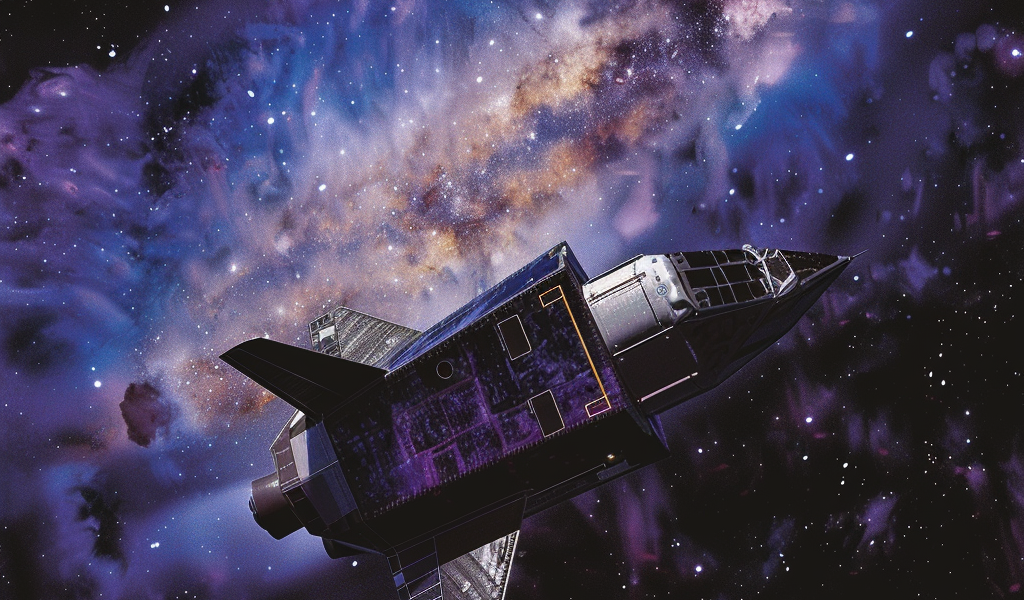The U.S. Space Force’s X-37B space plane, known for its enigmatic missions, is set to embark on a series of aerobraking maneuvers aimed at lowering its orbit. This initiative, which has been shrouded in secrecy, was recently discussed in a statement released by Boeing and the U.S. Space Force. The aerobraking process is crucial for safely disposing of superfluous hardware before the spacecraft returns to Earth.
In a recent video, Boeing provided insights into the aerobraking technique that the X-37B will utilize. This innovative maneuver is designed to modify the spacecraft’s altitude and ensure compliance with established standards for mitigating space debris. The aerobraking method offers a sustainable alternative to traditional thruster burns, which consume onboard propellant and limit the number of orbital adjustments a satellite can perform.
John Ealy, a Boeing engineer, elaborated on the aerobraking process, stating, “When we aerobrake, we utilize atmospheric drag to effectively step down our apogee one pass at a time until we get to the orbital regime that we want to be in. When we do this, we save enormous amounts of propellant, and that’s really why aerobraking is important.” This technique not only conserves fuel but also enhances the spacecraft’s operational lifespan.
For context, aerobraking involves changing the spacecraft’s orientation so that its flat surface faces forward, maximizing atmospheric drag to slow down the vehicle. This method contrasts sharply with conventional satellite maneuvers that rely on thrusters, which require refueling after a limited number of burns. The X-37B’s ability to perform aerobraking maneuvers could significantly extend its operational capabilities.
The X-37B has been a focal point of curiosity since its inception, primarily due to its classified missions and the limited information available to the public. This recent disclosure marks a shift towards greater transparency regarding its operations. The spacecraft has successfully completed several missions since its first launch in 2010, each contributing to the understanding of advanced technologies and space operations.
As the X-37B prepares for its aerobraking phase, the implications of its operations extend beyond mere orbital adjustments. The U.S. Space Force has emphasized the importance of responsible space operations, particularly in light of growing concerns about space debris and the sustainability of satellite operations. By employing aerobraking techniques, the X-37B is setting a precedent for future missions and reinforcing the commitment to minimizing the environmental impact of space activities.
In the animation released by Boeing, viewers can observe the X-37B altering its attitude in preparation for the aerobraking maneuvers. The intricate design of the spacecraft allows it to adapt its orientation effectively, ensuring optimal performance during the transition to a lower orbit. This capability is vital for the successful execution of its mission objectives.
The X-37B’s aerobraking maneuvers are not only a technical achievement but also a strategic move in the realm of space exploration and defense. As the U.S. military continues to explore new technologies and methodologies, the X-37B serves as a cornerstone for future advancements in space operations. Its ongoing missions will undoubtedly contribute to the broader understanding of how to navigate the complexities of operating in Earth’s orbit.
As the aerospace industry evolves, the significance of innovative techniques like aerobraking cannot be overstated. The ability to maneuver in space with minimal resource consumption is a critical factor in the sustainability of long-term space missions. The X-37B’s approach exemplifies the potential for future spacecraft to adopt similar strategies, paving the way for a new era of efficient space exploration.
In summary, the X-37B’s upcoming aerobraking maneuvers represent a significant step forward in the operational capabilities of military space assets. With the emphasis on sustainability and responsible space practices, this initiative not only enhances the spacecraft’s functionality but also addresses the pressing challenges posed by space debris. As the aerospace community watches closely, the outcomes of these maneuvers will likely influence future missions and strategies in the ever-evolving landscape of space exploration.





